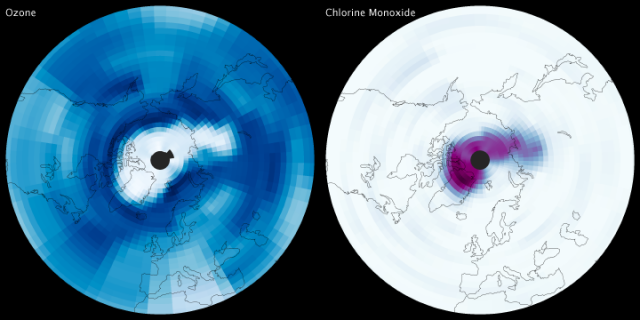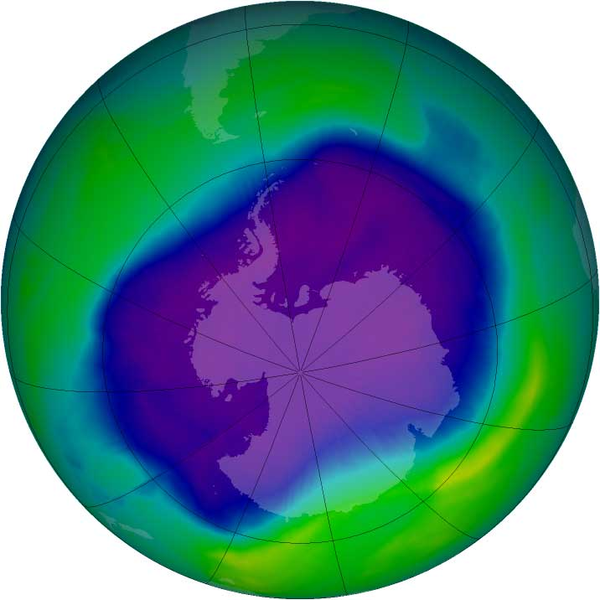![]() Unprecedented Arctic ozone hole of 2011. NASA image by Eric Nash and Robert Simmon with data from the Aura Microwave Limb Sounder team.
Unprecedented Arctic ozone hole of 2011. NASA image by Eric Nash and Robert Simmon with data from the Aura Microwave Limb Sounder team.
An unexpected ozone hole—the first of its kind—opened above the Arctic this past spring, with a whopping ozone loss of more than 80 percent 11 to 12 miles/18 to 20 kilometers above Earth. That thinning rivals the worst of Antarctica’s ozone woes. We’ve become used to a persistent hole above Antarctica, which, despite our phase-out of CFCs, refuses to heal… thanks to a positive feedback loop between ever-increasing greenhouse gas emissions and a paradoxical cooling in the stratosphere. (I first wrote about this in MoJo’s The Thirteenth Tipping Point.) Only 9 years ago the World Meteorological Organization surmised the Arctic would never produce an ozone hole, since it lacked a polar vortex and really cold temperatures. But as the authors of a new paper in Nature report this week, the Arctic got the vortex this year, and: “Our results show that Arctic ozone holes are possible even with temperatures much milder than those in the Antarctic.” We know that decreased ozone leads to increased UV-B radiation, skin cancers, and reduced yields of two-thirds of the 300 most important crop varietals. Europe’s winter wheat crop likely took a noticeable hit from this year’s Arctic ozone hole. As to why the stratosphere gets colder in a warming world, Jeff Masters at WunderBlog sums it up: “If the surface atmosphere warms, there must be compensating cooling elsewhere in the atmosphere in order to keep the amount of heat given off by the planet the same and balanced. As emissions of greenhouse gases continue to rise, their cooling effect on the stratosphere will increase. This will make recovery of the stratospheric ozone layer much slower.”













